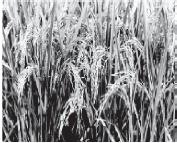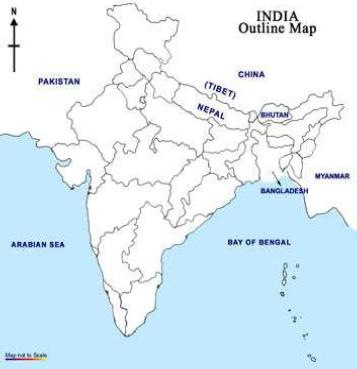CBSE Board Question Paper 2009
SOCIAL SCIENCE
SET-1
[Time allowed: 3 hours] [Maximum marks: 80]
General Instruction:
(i) There are 29 questions in all. All questions are compulsory.
(ii) Marks for each question are indicated against the questions.
(iii) Questions from serial number 1 to 10 are 1 mark questions. Answer of these questions may be from one word to one sentence.
(iv) Questions from serial number 11 to 18 are 3 marks questions. Answer of these questions should not exceed 80 words each.
(v) Questions from serial number 19 to 28 are 4 marks questions. Answer of these questions should not exceed 100 words each.
(vi) Questions No. 29 is a map work question. Attach the map inside your answer book.
Q1. Give the meaning of liberalism. [1]
OR
Mention the main base of colonial economy of Vietnam. [1]
Q2. Which are the two sources of fresh water in India? [1]
Q3. Name the two main ferrous minerals. [1]
Q4. Where is the largest solar plant located in India? [1]
Q5. Mention the two major ethnic groups of Belgium. [1]
Q6. How did Tommie Smith and John Carlos try to draw international attention to racial discrimination in the Untied States at the time of Olympics, held at Mexico City in 1968? [1]
Q7. Why do some people, belonging to the same religion, often feel that they do not belong to the same community? [1]
Q8. What is the main criterion of comparing the development of different countries? [1]
Q9. Give the meaning of average income of a country. [1]
Q10. What is meant by sustainability of development? [1]
Q11. How did Romanticism seek to develop a particular form of nationalist sentiments during 18th century? Explain? [3]
OR
Why did French policy makers wanted to educate the people of Vietnam? [3]
Q12. Describe any three features of Civil Disobedience Movement of 1930. [3]
Q13. Study the given passage and answer the questions that follow: [3]
The Independence Day Pledge, 16 January 1930
‘We believe that it is the inalienable right of the Indian people, as of any other people, to have freedom and to enjoy the fruits of their toil and have the necessities of life, so that they may have full opportunities of growth. We believe also that if any government deprives a people of these rights and oppresses them, the people have a further right to alter it or to abolish it. The British Government in India has not only deprived the Indian people of their freedom but has based itself on the exploitation of the masses, and has ruined India economically, politically, culturally and spiritually. We believe, therefore, that India must sever the British connection and attain Purna Swaraj or Complete Independence.’
(ii) How did British Govt. exploit the Indian masses? Explain.
Note: Below are given three groups – A, B and C for questions number 14 and 15. Select any one group for answering these two questions.
Group – A
Q14. What is Group 77? Why did Group 77 countries demand a New International Economic Order? Explain. [3]
Q15. How did East India Company capture regular supply of cotton and silk goods from Indian weavers? Explain. [3]
Group – B
Q14. Explain with examples that an average worker in the mid nineteenth century was not a machine operator but the traditional crafts person and laborer. [3]
Q15. Mention various measures which were taken to decongest London in the nineteenth and twentieth centuries. [3]
Group – C
Q14. Explain with examples the role of technology in helping to solve hardships of food availability throughout the world in late nineteenth century. [3]
Q15. How did the development of cities influence the ecology and environment in late nineteenth century? Explain by giving examples of Calcutta. (Kolkata) [3]
Q16. Explain any three factors that affect the location of industries in a region. [3]
Q17. Explain how power is shared among different organs of government. [3]
Q18. How did consumer movement arise in India? Explain. [3]
Q19. “Print did not only stimulate the publications of conflicting opinions among different communities but also connected them in nineteenth century in India.” Support the statement with examples. [4]
OR
“Prem Chand’s novels are filled with all kinds of powerful characters drawn from all levels of society.” Support the statement by giving suitable examples. [4]
Q20. Classify resources, on the basis of exhaustibility in two groups. Mention three characteristics of each. [4]
Q21. Look at the picture carefully and answer the questions that follow: [4]

(Correct answer is RICE as given at page no. 36 of geography book)
(i) Name the crop shown in the picture.
(ii) Write climatic conditions required for cultivation of this crop.
(iii) Name two major producing states of this crop.
Note: The following question is for the Blind Candidates only, in lieu of question number 21.
Explain any four characteristics of commercial farming in India. [4]
Q22. Why is road transport more useful than rail transport in India? Explain four reasons. [4]
Q23. How do social divisions affect polities? Explain wit examples. [4]
Q24. How do pressure groups influence politics? Explain with examples. [4]
Q25. “Democracies lead to peaceful and harmonious life among citizens.” Support this statement with examples. [4]
Q26. What is an organized sector? Describe its working conditions. [4]
Q27. Why are transactions made in money? Explain with suitable examples. [4]
Q28. “Globalisation and competition among producers has been of advantage to the consumers.” Give arguments in support of this statement. [4]
Q29. Six features with serial numbers (i) to (vi) are marked in the given political outline map of India. Identify these features with the help of the following information and write their correct names on the lines marked in the map. [6]
(i) A region of large scale industries in 1931
(ii) An important centre of overseas trade during 17th century.
(iii) A bauxite mine
